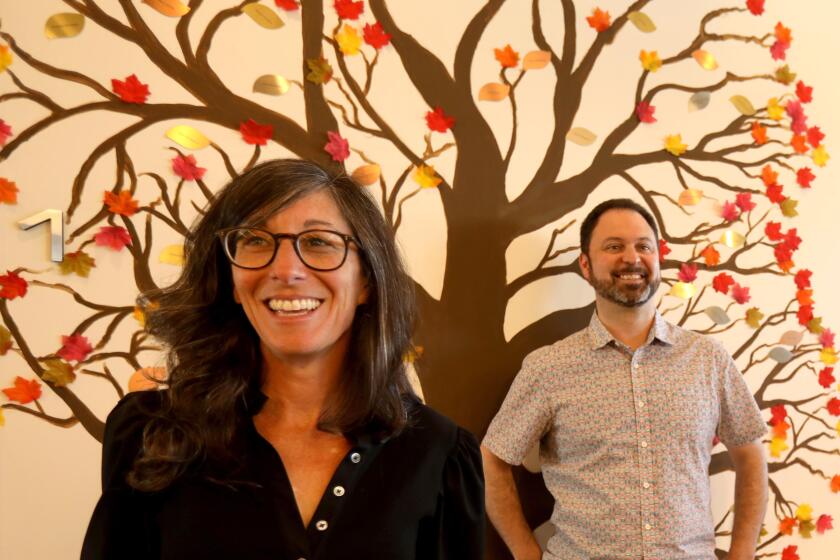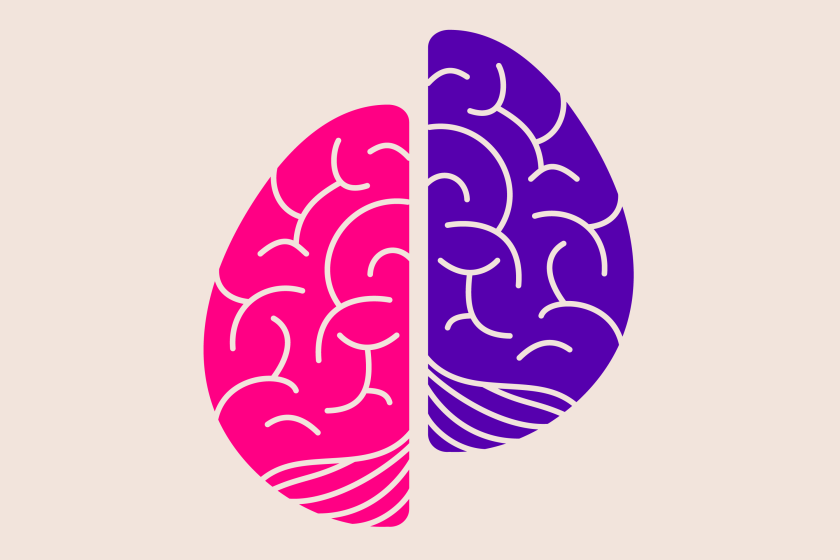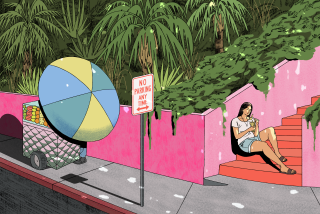
- Share via
There’s no way to sugarcoat it: These are challenging times to live in Los Angeles.
In the last few years an unprecedented number of stressors have coalesced around us— skyrocketing inflation and immense income inequality; record-breaking drought and heat waves; an alarming rise in hate crimes, especially against Asian, Black and LGBTQ residents; and the many lingering effects of a devastating global pandemic.
Amid — and because of — these adversities, our children are suffering. In California, rates of anxiety and depression among youth shot up by 70% from 2016 to 2020, according to an analysis by the Annie E. Casey Foundation. The California Department of Public Health reports that suicide rates among young people grew 20% from 2019 to 2020.
The pandemic and distance learning have also wreaked havoc in education. As many as 20,000 L.A. Unified students were unaccounted for at the beginning of the school year. More recently, the district reported that 72% of students are not meeting state standards in math, and about 58% have fallen behind in English, reversing five years of progress. Black and Latino students, as well as girls, were especially affected.

To consider each of these challenges on its own is enough to send one’s heart racing: To confront them all at once is almost too much to bear.
“One of the biggest threats to our mental health is that there is not just one biggest threat, or two or three,” said Lisa Wong, acting director of the Los Angeles County Department of Mental Health. “Maybe the biggest threat is that it feels like it’s coming at you from all sides.”
Does anyone else feel as if they’re drowning?
We are not all suffering equally, but none of us are immune to the effects of these extraordinary times.
This year the Los Angeles County Quality of Life Index, an annual survey that measures Angelenos’ satisfaction with their lives, fell 5 points compared with last year. At 53 out of a possible 100, it was the lowest score since UCLA started the survey in 2016.
The 1,400 respondents, representing a cross-section of the county’s population, expressed increasing dissatisfaction in all nine categories included in the survey. The biggest dips were seen in cost of living, transportation, public safety and the economy.
“What it said to us is that county residents aren’t happy,” said Zev Yaroslavsky, the UCLA professor and former city councilman who oversaw the project. “There is an anxiety level here that is unprecedented in my lifetime.”

How To Save A Life
Pandemic stress, traumatic events and economic uncertainty have upended our world. This series aims to make the cascade of threats to your mental health a little easier to manage.
If we’re anxious, it’s for good reason. Rising inflation earlier this year pushed up the cost of staples like bread, gas and clothing. These cost hikes were not unique to Los Angeles but were especially painful in a city where more than half of residents pay housing costs that are typically considered unaffordable. A 2019 city report found that 51.7% of all households in Los Angeles spend more than 30% of their income on rent. Nearly one-third of renters in the city —32% — spend more than half of their income on rent, according to the same report.
And if you want to talk about anxiety, consider this: One-quarter of respondents to the quality of life index said they go to bed each night worrying they will end up living on the street. Yaroslavsky says that translates to roughly 2.5 million countywide who believe they may become homeless.
According to the latest homeless count, 69,144 people in the county are experiencing that reality right now — part of our “perfect storm” he added.
Wong put it this way: “All these issues bubbling up in society have brought people’s psyches to a boiling point.”
Delivering mental health services to all of the people who need it has always been a challenge, and it’s only getting harder. Even as demand increases, it has become more difficult to find mental health workers to fill positions, some of which were vacated during the pandemic. At one Los Angeles County mental health clinic this summer, the wait time for therapy was six months. Scheduling an appointment to meet with a psychiatrist for an initial medication evaluation was closer to eight months.
Providing services in schools to deal with the youth mental health crisis has also proved to be problematic. L.A. Unified set aside $177 million to hire nearly 900 social workers and other mental health staff for the 2021-22 school year. One year later, about one-third of the social workers had been hired.
All of this is to say, if you are struggling right now — if you need a little extra support to make it through the day, the week, even the next hour — you’re not alone. Most of Los Angeles is right there with you.
Although we cannot make the pain of this moment go away, our hope is that we can help make the cascade of threats to your mental health a little easier to manage.

In this series, you’ll hear from individuals who have faced their own challenges — like living with a psychotic disorder or long COVID — and learn what they’ve been able to achieve, not in spite of their diagnoses but because of them.
We’ll explore the ambiguous nature of COVID grief, and take you into the world of VR meditation, which holds great promise for people with mental health issues. We’ll talk to people who are trying to understand the complexities of suicide and how we might work to prevent it — and we’ll explain how the new national suicide hotline 988 is supposed to work.
We’ll also hear from mental health professionals and healers, as well as academics and researchers who have dedicated their lives to helping and supporting those who are struggling. What are their success stories, and how might the rest of us help?
We’ll also share some resources and tools for managing your own mental health needs and those of your friends and loved ones — and we’ll share some of our favorite places to find solace.
Therapists ask clients to consider the systemic forces that are contributing to their mental health struggles and then work to empower them to do something about it.
And last, but definitely not least, we want to offer this glimmer of hope.
Because even as we face the largest mental health crisis this city has ever seen, there’s a movement to lay the groundwork for a society that is more open to talking about mental health and addressing it than we’ve ever seen before.
“The problems are overwhelming,” but we have the potential for abundant and scalable solutions, Wong said. “We can create a hope that is contagious. We can help people do things beyond what they thought they had the capacity to do.”
By educating ourselves we have an opportunity — all of us — to contribute not just to our own well-being, but to the well-being of our family, our friends, our co-workers and our communities.
Let’s seize it.
If we’re going to be talking about mental health, we need to attempt to define what it means to be mentally well — which can be a messy endeavor.
More to Read
Sign up for Essential California
The most important California stories and recommendations in your inbox every morning.
You may occasionally receive promotional content from the Los Angeles Times.














